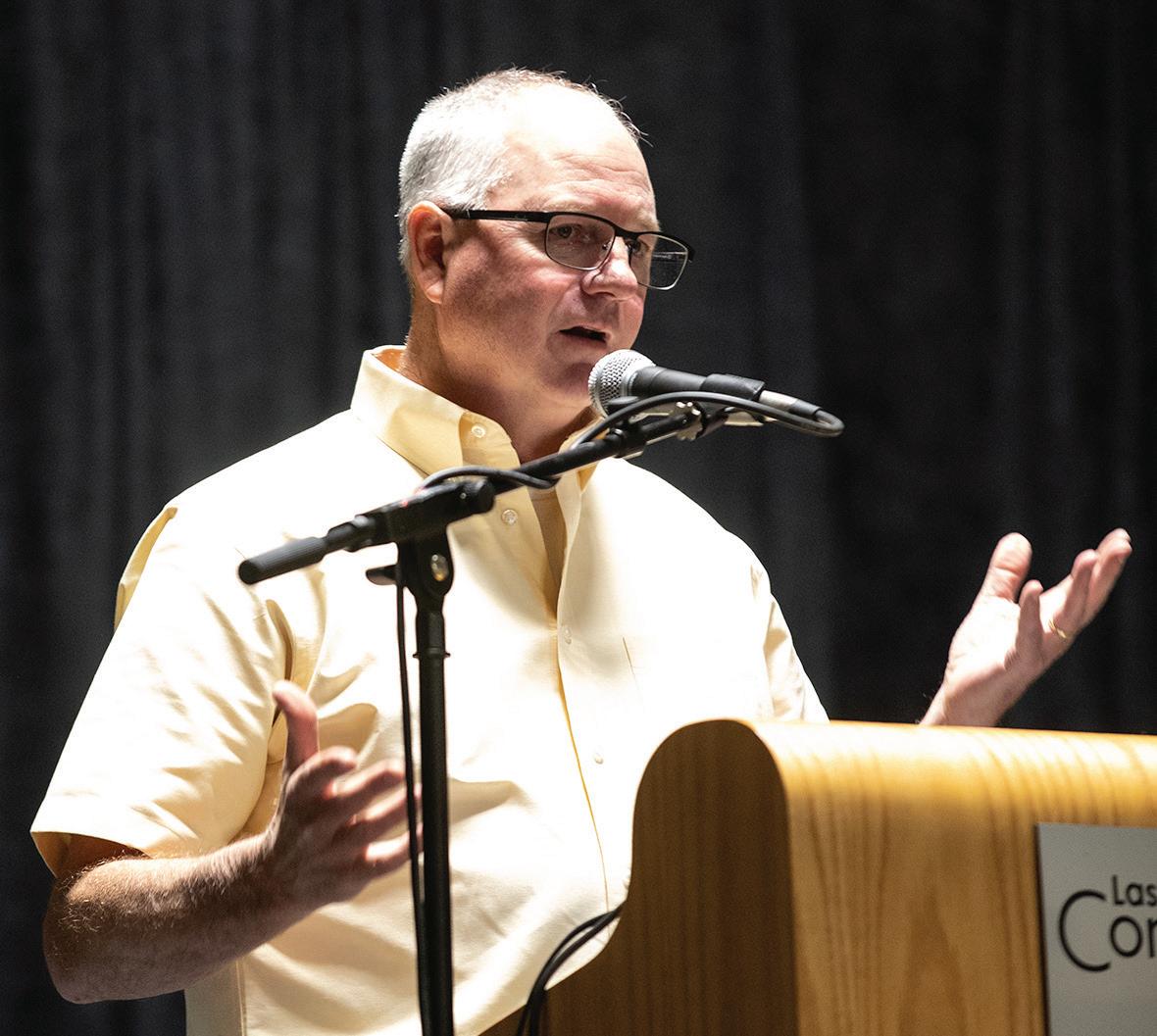President’s Profile: Catalyst for Progress
2021-22 BIF President
Matt Perrier encourages producers to focus on producing efficient, sustainable beef.
Fifth generation cattle rancher Matt Perrier grew up in the picturesque Kansas Flint Hills near Eureka. As part owner and manager of Dalebanks Angus he strives to provide genetics to commercial cow-calf and seedstock producers. “Dad’s ‘office’ was a desk in our family room, and most of my childhood memories were of him on the phone explaining things like adjusted 205-day weights, contemporary groups and eventually expected progeny differences to our bull customers and counterparts in the seedstock business,” Matt recalls. “Some of the biggest advances in technology came when we were able to move from a mass-balance scale to a digital readout in the 1990s. Then came ultrasound, genomics and other technologies. Right or wrong, my ‘ranch lessons’ were often more about proper contemporary groups and ratios than they were about riding and roping.” Elected to the Beef Improvement Federation (BIF) board of directors in 2016, Matt has served as BIF president for the past year. He passed the gavel to Vice President Joe Epperly from Albion, Nebraska, during the 2022 BIF Symposium June 3. “To me, BIF is a catalyst for progress in the beef cattle industry,” Matt explains. “That progress isn’t always immediate, polished or perfect, but BIF has a good track record for being the place where industry change is often initiated.”
Matt’s path back to the ranch
Matt earned his bachelor’s degree in Animal Sciences and Industry from Kansas State University. While at K-State he was a member of the meat and livestock judging teams, FarmHouse fraternity and was active in several other campus groups. After college, he worked for the American Angus Association as a regional manager and later director of commercial and industry relations. “Working in these roles opened my eyes to the various ways that performance information and genetic predictions are viewed and utilized,” he explains. Bill Bowman, Method Genetics manager and Matt’s former American Angus Association coworker, says, “Matt was a solution-driven leader with a passion to improve the beef industry. Matt had a thirst to always learn and consider the future of the American Angus Association during his tenure there, and many of the successful programs today were the result of his futuristic thought process. Matt was very service oriented in a member organization, and that characteristic has also served him well in his leadership role at BIF. 6
“Matt took his experience in all segments of a very diverse beef industry home to Dalebanks Angus, using his knowledge to create practical, profit-oriented genetics, while providing unmatched customer service to their commercial cow-calf clientele.” Dalebanks Angus was settled by Matt’s ancestors in 1867. The next generation purchased the first registered Angus in 1904, and they have been raising Angus since then. “We calve about 450 females in separate springand fall-calving herds,” Matt explains. “Cows spend all year on grass and are supplemented protein and limited hay in the winter. All breeding-age females are synchronized and artificially inseminated through two heat cycles, then bulls are turned out for 25-45 days.” Dalebanks markets roughly 200 bulls annually through a fall sale and spring private treaty. The Perriers have a small farming enterprise of corn, soybeans and wheat that serves to raise feed for the cow herd. “We also grow cover crops on all of our farmed acres, which serves as supplemental forage for pairs during the fall, winter and early spring,” Matt adds.
BIF leadership
“My first contact with BIF was when my parents won the BIF Seedstock Producer Award in 1995. After later attending the Symposia myself in the late 90s and early 2000s as a breed association representative, it’s hard for me to believe that I’m now serving in a leadership role,” Matt explains. “Some presidents want to ‘leave a legacy’ on the organization that they lead. That hasn’t been my style in past roles, and it certainly wasn’t necessary in this one,” he adds. “Part of BIF’s uniqueness has been its ability to bring hundreds of enormous egos who all believe that their breed, research focus, technology or breeding philosophy are superior; and then put them in a room to listen, share and learn. The ideas that come out of those rooms are often industrychanging and inspiring. “I consider BIF as a place that brings all segments of beef cattle genetics together to share ideas, debate concepts and methods and then find their own ways to develop and use the information to improve beef production. As president, I didn’t try to improve on that model…I just tried to encourage folks to recognize its unique value and let the model quietly work.” If you survey Symposium attendees, they’d describe the event as one of the few meetings that draws a balanced representation from the genetic





















